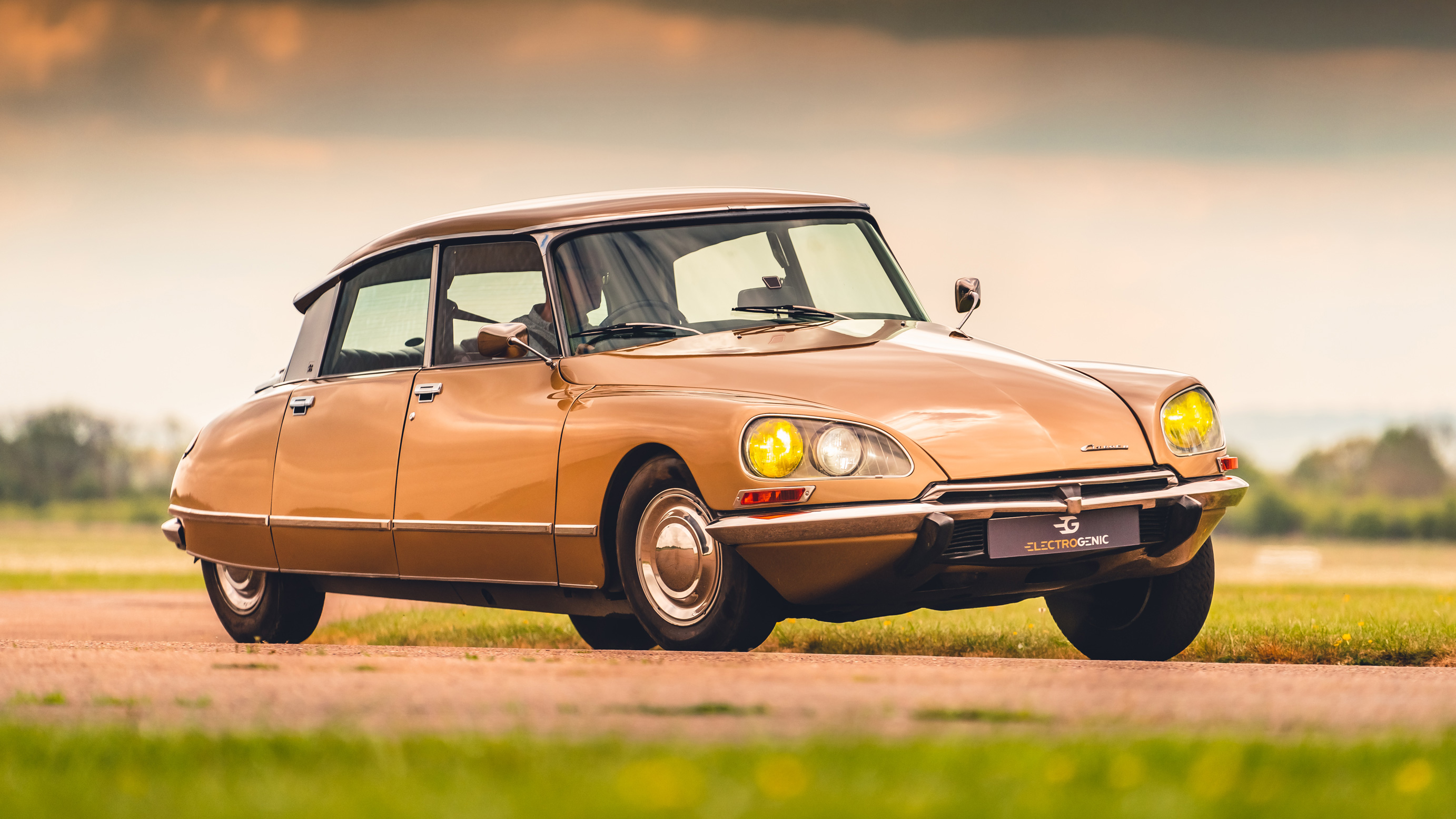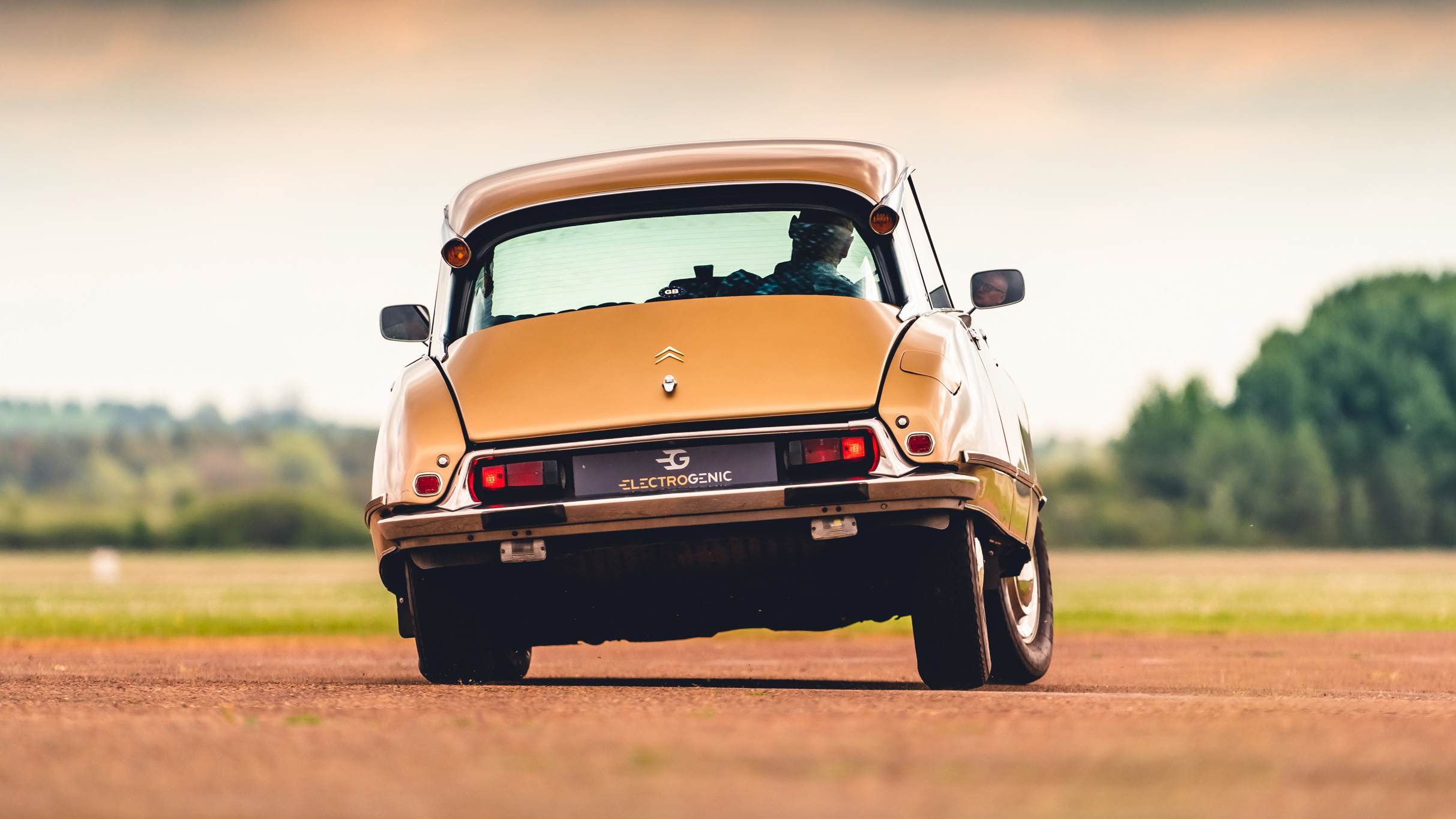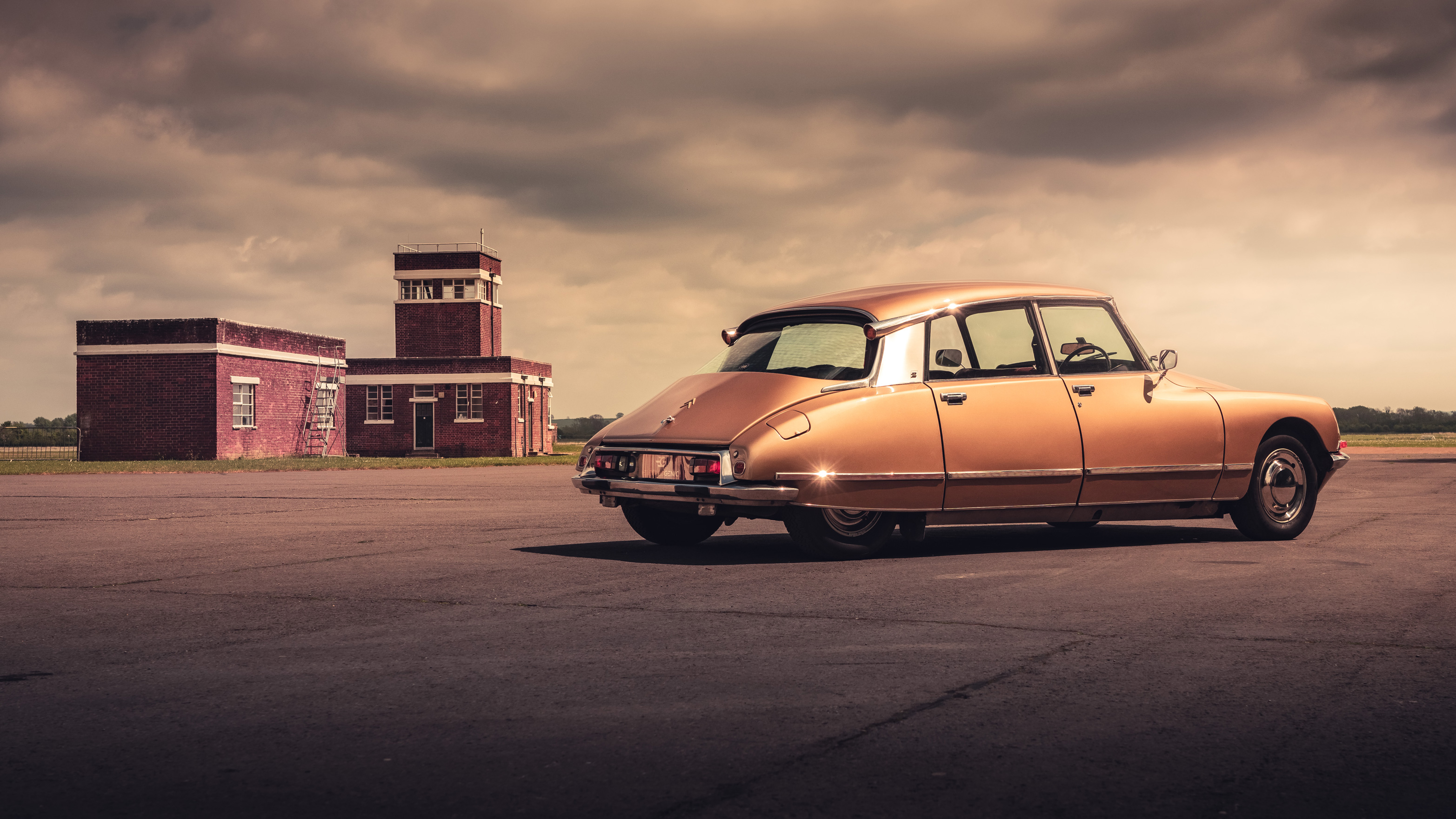
Electrogenic Citroen DS review: first drive of an electric classic
Oooooh, the DS. *Sigh*. One of the most beautiful cars ever.
Yup, and the most technically advanced too.
Quick recap please.
High-pressure hydraulics for the self-levelling suspension and steering and brakes, radial tyres, a modular body with some composite panels, inboard disc brakes, and headlamps that steer round corners.
But they're not what we're here to talk about. Because missing from that list of advances is the propulsion. The DS was meant to have a new flat-six when launched in 1955, but unsurprisingly Citroen ran out of money, so it inherited the boring pushrod four from the older Traction Avant.
It makes perfect sense to replace that with electric drive. As Oxfordshire converter Electrogenic has done.
An electromod without sacrilege?
Absolutely. Anyway, if you still have qualms about destroying history, note that this one, like all Electrogenic's conversions, is fully reversible. "We don't cut the original car."
So you end up with something that's gorgeous to behold, balming to ride in, and utterly intriguing to drive.
I thought EVs were anything but intriguing. Just boring acceleration?
Not here. This one has a clutch and gears. It runs at a lower voltage than mass-made electric cars. This simplifies the installation. It also means the motor doesn't have such a wide speed range, so it's worth keeping the gearbox. Which adds involvement.
One quirk is that although you use the clutch for changing gear, you don't use it for starting or stopping. The motor, unlike an engine, can drop to zero revs. So in town you can just stick it in second or third and drive like a 'normal' EV.
But for interest – and efficiency – you can use the upper gears on faster roads, and shift down to get extra regeneration.
As with anything mid-century Citroen, the gearlever is unconventional, a large wand branching off the steering column. It's not as intimidating as it looks, easing through its up-down gate with a gentle ker-lunk.
Top Gear
Newsletter
Thank you for subscribing to our newsletter. Look out for your regular round-up of news, reviews and offers in your inbox.
Get all the latest news, reviews and exclusives, direct to your inbox.
One rather hilarious touch is this car still has its original choke knob. Pull it out and you switch the motor, for reversing.
And how does it go?
The accelerator has a long travel, with a very gentle tip-in, so it's easy to be smooth. But flex your ankle all the way and it has the sort of surge that doesn't feel overdone in an old car, but is definitely handier than the original. Power is 120bhp.
But won't electric torque break the clutch and transmission?
No, because all components are carefully matched and mapped. Electrogenic buys the motor, but uses in-house electronics. And the 110V system is less brutal than a modern EV's.
It better matches how an engine, especially an old engine, feels. The Citroen installation is delightfully relaxed. In contrast they also did one for a Porsche 356 that's mapped to feel more peaky, like a Porsche engine would.
Boring range and charge questions ahoy…
It has batteries under the back seat as well as under the bonnet, above the motor. Total is 50kWh. Range would be about 150 miles. Enough for the owner of this car (who does daily-drive it) to have just come home from a lovely tour of France, with plenty of lunches. You wouldn't mash the range by hauling down the autoroute.
Because it's low-voltage, DC charging would cook it, so this one has 22kW three-phase AC charging, enough to replenish in just over two hours.
I don't see any sign of the work.
No. It robs no passenger or boot space. Unless you lift the bonnet the only sign is the missing tailpipe. The cabin too is as per original, though the glovebox hides a charging info screen.
Electrogenic's philosophy is to maintain classic integrity by making all their work reversible. They unbolt stuff – engine, radiator, exhaust, fuel tank. Next step is a digital 3D scan of the original body and chassis. Then they design a package of electrifying components to fit that space and suit the original weight distribution: batteries, motor, charger, inverter, DC-DC converter and cabin heating.
In the case of the DS (and a Rolls Silver Shadow, also fluid suspended) they built an electrically driven hydraulic pump too.
By the way, if you still don't fancy this gearshift business, and want rapid DC charging, they also design and build 400V single-speed conversions.
And the cost?
It's not a prix-fixe menu. Most of Electrogenic's conversions are bespoke, and they offer loads of choices in motor, battery size, voltage and more. (They do a cheaper drop-in kit for Land Rovers, as used at Glastonbury's Worthy Farm, and will soon have one for Minis.) You'd be looking somewhere around £40,000. A lot? Maybe, until you look what people are happy to spend on classics. This can future-proof a much-loved heirloom, as well as make it city-friendly for today.
Now, back to the DS.
Ah yes, what a sculpture. Its look, feel and engineering were and remain magical and deliciously other. It's utterly French, a combination of fiercely independent rive gauche intellectualism with a hedonistic luxury.
This 1972 example has a lovely period colour scheme – Ambre Solaire paint, grand-crème carpets, pain-au-chocolat seats. Not so much seats as sofas that gently caress your body. And yellow headlights, of course. Visibility is panoramic. There's loads of room, so much so that you loll about in vigorous cornering.
Well, I say vigorous. There isn't much grip, so the roll angles are a little less than you'd expect. The sensations of pitch and heave are hardly more than in say a modern Land Rover Discovery. The steering is very precise for an old car, and because the rear track is visibly narrower than the front, understeer isn't an issue.
The high-pressure brakes are a world better than in most old cars. You soon get used to their zero-travel rubber-bulb 'pedal'.
And the ride. Oh the ride. Sharp potholes can intrude, but you mostly do just float along like a plane just above the runway.
So we approve?
Oh yes. The ghosts of the DS's creators are sitting in the back seat, finally satisfied that after all these years this is the serene DS they would have built.
Photography: Mark Fagelson
Featured

Trending this week
- Car Review
BMW 1 Series






